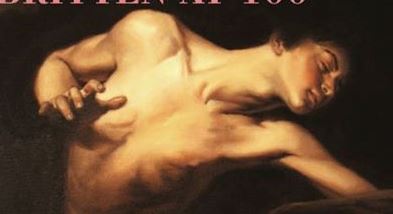
Marco Panuccio Celebrates Britten
It was the Benjamin Britten event of the season in Cincinnati Sunday afternoon at Calvary Episcopal Church in Clifton, and the fanuccios were out for it -- fans of tenor Marco Panuccio, that is.
2013 is the centenary of the British composer and Cincinnati-based Panuccio engineered quite a coup with his self-produced "Britten at 100" concert, including what is thought to be the U.S. premiere of all of Britten's Five Canticles performed on a single program. That plus three of Britten’s Purcell Realizations, his Suite for Harp, Op. 83, and Fanfare for St. Edmundsbury for three trumpets made for a diverse and delectable program.
Joining Panuccio were pianist Julie Spangler, harpist Alaina Graiser, trumpeters Daniel Arute, Adrienne Doctor and John Kilgore, baritone Alex Hurd, countertenor Michael Match, French hornist Jeremy Moon and speakers Evans Mirageas and Charles Parsons. Though not originally conceived as such, the Five Canticles were performed as a set on the second half of the program. Composed at different times during Britten's life, they utilize texts by different authors, are non-liturgical and vary in subject matter and scoring.
Canticle I, “My Beloved is Mine” (1947), derives from a poem by Francis Quarles (1592-1644), inspired by the biblical Song of Solomon. Set for tenor and piano, it celebrates divine love through the metaphor of physical love and as such, reflects Britten’s lifelong devotion to tenor Peter Pears as well. Ecstatic and joyous, it was given a breathtaking rendition by Panuccio, whose gilt-edged, lyric voice soared before ending in a gentle affirmation.
Canticle II, “Abraham and Isaac” (1952), taken from the 15th-century Chester Mystery Plays, is a virtual opera scene. Set for tenor, countertenor and piano, it tells the biblical tale in which God commands Abraham to sacrifice his son Isaac. Panuccio (Abraham) and Match (Isaac) acted and sang their roles brilliantly, joining as one for the voice of God. The agitation of the scene was palpable, as Match knelt to receive the fatal blow and Panuccio gave voice to Abraham’s anguish. His relief rang out to thrilling effect as Abraham received God’s direction to spare Isaac, and father and son joined in a harmonious duet.
Canticle III (1954), set to Edith Sitwell’s “Still Falls the Rain” from her collection “The Canticle of the Rose,” was performed with a piece Britten added later, “The Heart of the Matter.” Subtitled “The Raids, 1940, Night and Dawn,” “Still Falls the Rain” is an allegorical treatment of the Passion of Christ, expressed through the devastation of war. “The Heart of the Matter” frames it with a prologue, an epilogue, a song and readings of more Sitwell poetry, here delivered eloquently by Mirageas and Parsons. Joining Panuccio in the combined performance (a U.S. premiere in the 1983 revised version by Peter Pears) was Moon, who rendered the interludes between verses of “Still Falls the Rain” and fanfares within “The Heart of the Matter” with notable agility.
It was a feast of reflection and allusion, Panuccio opening with a big crescendo on “Where” (“Where are the seeds of the Universal Fire to burn the roots of Death in the world’s cold heart?”). There was a feeling of nerve-tingling alarm in the horn and piano interludes in “Still Falls the Rain,” which nevertheless ended like a chorale on Christ’s words, “Still do I love, still shed my innocent light, my blood, for thee.”
Canticle IV, “Journey of the Magi” (1971), a setting of the poem by T.S. Eliot, was unlike the holiday card versions of the Three Wisemen. A trio for tenor, baritone and countertenor, it speaks of hardship and stress -- “cities hostile,” “towns unfriendly,” “villages dirty” -- but also deep reflection: “Were we led all that way for birth or death?” Panuccio, Match and Hurd made it fittingly bittersweet.

Panuccio was joined by harpist Graiser in Canticle V, “The Death of St. Narcissus” (1974), also on poetry by Eliot. The Canticle refers to St. Narcissus (a second-century bishop of Jerusalem), the mythological Narcissus (who died and became a flower after gazing at his image in a pool), and the martyr St. Sebastian and reflects Britten’s preoccupation with death (he was to die two years later). Panuccio rendered its complex imagery with consummate skill.
The three Purcell Realizations (settings by Britten for voice and piano, using Purcell’s harmonic directions) were neatly contrasted on the first half of the program. “Let the dreadful engines,” from “The Comical History of Don Quixote” by Thomas d’Urfey (1694), was sung with a pealing voice by Hurd, who ended with a delightful misogynistic tirade. By contrast, Panuccio’s “in the black dismal dungeon of despair” was stirring and heartfelt. Match’s “Evening Hymn” was sweetly delivered in a voice touched with silver. As she did all afternoon, Spangler performed with a deft touch and keen expression.
Graiser opened the concert with a ravishing performance of Britten’s Suite for Harp (1969). This distinctive piece, in four short movements, combined a joyful Overture, a nimble Toccata, a spellbinding Nocturne, a quick-as-a-wink fugue and a final hymn and variations (which showed Indonesian gamelan influence). Trumpeters Arute, Doctor and Kilgore were stationed at three compass points in the nave of the church for “Fanfare for St. Edmundsbury” (1959), a piece written for a celebration of the Magna Carta at St. Edmundsbury Cathedral in East Anglia that would be quite at home in Cincinnati’s Music Hall.